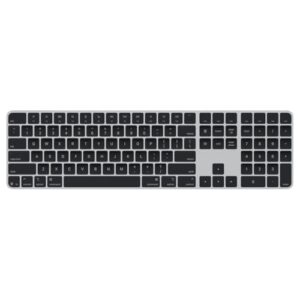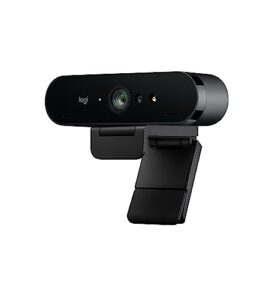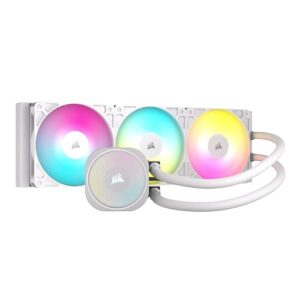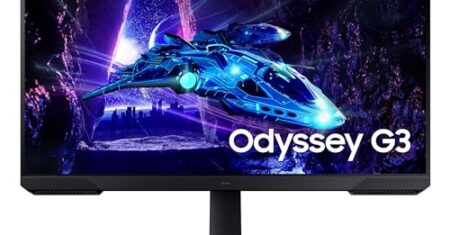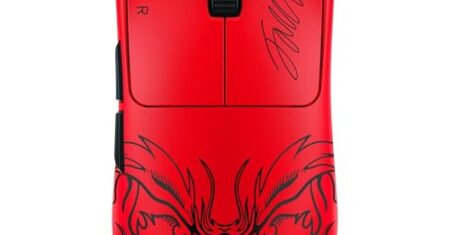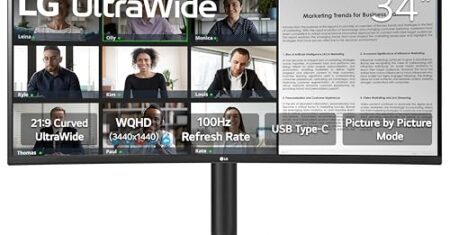Best Water Coolers in 2025 (Top 7: Corsair, NZXT and More)
Last Updated on August 29, 2025
Discover the top-rated water coolers for your PC. Find the best liquid CPU cooler to keep your components cool and boost your gaming performance.
Your CPU deserves better than sweaty panic-mode. You want low temps, low noise, and a build that doesn’t look like a blinking disco in a power outage. Short and sweet: cooler that actually cools, and looks that don’t lie.
Pick a radiator size that fits, fans that won’t wake the neighbors, and a pump that won’t sound like a jet engine. You’ll find high-end quiet 360mm beasts and compact 240mm heavy-hitters below—plus a few pretty faces if aesthetics matter.
Contents
- The Best Water Coolers
- CORSAIR Nautilus 360 RS ARGB AIO
- ARCTIC Liquid Freezer III Pro 240
- NZXT Kraken 240 LCD AIO Cooler
- Cooler Master MasterLiquid 360L Core
- Thermaltake TH360 V2 ARGB Infinity AIO
- ID‑COOLING Frostflow X 240 White AIO
- Thermalright Frozen Notte 360 V2 ARGB
- Final Thoughts on the Best Water Coolers
- How Do Water Coolers Work and Why Should You Get One?
- How to Choose the Best Water Cooler
- Check Out the Best Water Cooler
- Also Check Out Other Helpful Articles
- Video About the Best Water Cooler
The Best Water Coolers







CORSAIR Nautilus 360 RS ARGB AIO
You get a solid balance of thermal performance and whisper-quiet operation designed for high‑TDP CPUs. The daisy-chain wiring and direct motherboard ARGB control simplify installation and reduce cable clutter.
Pros
- Excellent cooling for high‑end CPUs
- Very quiet pump and fans under load
- Daisy‑chain cabling reduces cable clutter
- Broad socket compatibility and solid build
Cons
- ARGB control limited without optional iCUE
- Larger 360mm size may not fit smaller cases
What it does and who it's for
The Nautilus 360 RS is built to keep high‑performance CPUs cool while remaining unobtrusive. If you run heavy gaming, content creation, or multi‑threaded workloads, you’ll appreciate the 360mm radiator and three RS120 ARGB fans that prioritize low noise and steady thermal control.
Key features and benefits
- 360mm radiator with 3x RS120 ARGB fans for strong heat dissipation
- Slightly convex cold plate and pre‑applied thermal paste for better contact and simpler installation
- Daisy‑chain fan and ARGB connections that plug directly into your motherboard
These features mean you can install the unit quickly, keep cables tidy, and rely on consistent cooling without a loud fan curve. Reviewers report stable temps on demanding CPUs with surprisingly low acoustics, which makes it a good pick if silence matters to you.
Practical insights and limitations
The unit is straightforward to install for a 360mm AIO, but you should check case clearance and radiator mounting before purchase. If you want deep customization of lighting and fan curves, you may eventually opt for the optional iCUE controller, but the cooler functions well directly from motherboard headers. Expect excellent reliability and a long service life, but be mindful that 360mm radiators aren’t compatible with every mid‑tower or compact case.
ARCTIC Liquid Freezer III Pro 240
You’ll get exceptional cooling efficiency for its size, with a focus on quiet operation and effective VRM cooling. The thicker radiator and optimized pump layout prioritize temperatures over flashy lighting.
Pros
- Outstanding thermal efficiency for 240mm size
- Quiet operation with effective fan profile
- Integrated VRM fan and smart contact frame
- High build quality and thoughtful design
Cons
- Radiator thickness can create clearance issues
- Pump noise reported intermittently by some users
Performance and design focus
The Liquid Freezer III Pro is engineered around cooling efficiency and low noise. If you prioritize core temperature reduction and stable performance in a compact radiator footprint, this unit is tuned for that goal. The included P12 Pro fans and the VRM fan add practical thermal management beyond the CPU alone.
Highlights
- Optimized contact frame for better CPU pressure distribution (especially on Intel LGA1851/LGA1700)
- Thicker 38mm radiator and high‑efficiency fans for strong heat rejection
- Integrated VRM fan to help stabilize motherboard power delivery temps
This translates into lower sustained CPU temps without excessively loud fans, which helps if you run long render jobs or sustained loads.
What to watch for
Because the radiator is thicker than many AIO rivals, you should verify clearance in your case — tight ITX or some mid‑towers may have issues. A small number of users report occasional pump noises during the break‑in period; in practice many owners report quiet, reliable operation after initial use.
NZXT Kraken 240 LCD AIO Cooler
You can personalize cooling visuals with a bright, 1.54" LCD that displays images, GIFs, or telemetry, giving a strong aesthetic boost to your build. Performance and pump quality remain competitive for a 240mm AIO.
Pros
- Customizable LCD for images and performance metrics
- Good cooling for 240mm form factor
- Straightforward installation with multiple brackets
- High‑quality cables and fittings
Cons
- Premium price compared to basic 240mm AIOs
- Screen utility depends on software usability
Why you might choose this unit
If you place as much value on aesthetics as on thermal performance, the Kraken 240's integrated LCD is its defining feature. It’s best for you if you want a centerpiece that shows system stats, custom imagery, or live visuals while still delivering capable 240mm cooling.
Features that stand out
- 1.54" 240x240 LCD that can display GIFs, images, and telemetry via CAM software
- Two F120P high‑pressure fans and a high‑performance pump for efficient heat transfer
- Broad socket compatibility and convenient mounting hardware
The LCD offers a truly unique customization layer—use it to show temperatures, a brand logo, or animated art. That makes it a frequent choice for streamers or builders who show their rigs.
Practical considerations
Performance-wise, this AIO is competitive with other quality 240mm units, but it's not strictly the best at raw thermals versus larger radiators. Software quality plays a large role in your experience: if you prefer lightweight utility tools, prepare to spend a bit of time configuring the display. For many users, the visual payoff justifies the higher cost.
Cooler Master MasterLiquid 360L Core
You get strong performance for the price, with an improved pump and copper coldplate focused on heat‑spot transfer. The RGB and build quality punch above its mid‑range price point, making it a sensible upgrade choice.
Pros
- Very competitive price for 360mm performance
- Improved Gen S pump and copper coldplate
- Customizable ARGB lighting with good aesthetics
- Includes premium CryoFuze thermal paste
Cons
- Can get louder at higher fan speeds
- Installation can be slightly fiddly for beginners
Who should consider this cooler
This MasterLiquid 360L Core targets you if you want a full‑size 360mm AIO without the premium price. It’s aimed at mainstream builders who want a balance of performance and visual flair without overspending.
Notable features
- Gen S dual‑chamber pump and redesigned copper base to directly target hot spots
- 360mm radiator for increased surface area and triple 120mm ARGB fans
- Upgraded CryoFuze 14 W/mK thermal paste included for better thermal conductivity
These upgrades translate into measurable temperature drops under load relative to older entry‑level AIOs. The ARGB implementation and attractive pump dome also make it a good match for themed builds.
Real‑world tradeoffs
You should expect strong cooling for gaming and productivity, though fans can become noticeable under sustained heavy loads if you push aggressive curves. Installation is straightforward if you’re comfortable with AIO mounting, but first‑time builders may want to follow a video guide. Overall, it's a high-value choice that leaves room for future fan or software tweaks.
Thermaltake TH360 V2 ARGB Infinity AIO
You’ll get strong 360mm cooling paired with an infinity‑mirror pump cap that elevates your system’s visual appeal. The unit offers flexible RGB synchronization and good thermal headroom for heavy workloads.
Pros
- Striking infinity mirror pump design
- Good 360mm cooling capacity and radiator design
- Syncs with major motherboard RGB software
- High airflow fans with solid static pressure
Cons
- Software can be inconsistent across platforms
- Pump speed and noise range may be high at max RPM
Visual focus with competent cooling
If you want a showpiece AIO, this Thermaltake model places the infinity mirror front and center while still providing a capable 360mm cooling solution. For builders who present rigs or value striking front‑panel visuals, the mirror waterblock is a frequent selling point.
Core specifications and benefits
- 27mm slim radiator with a thickened 20mm copper chamber for thermal transfer
- Three CT120 ARGB fans with 500–1800 RPM range and motherboard RGB sync support
- Mirror waterblock and broad socket compatibility across Intel and AMD platforms
These elements deliver both eye candy and practical cooling. Users report meaningful temperature drops in servers and desktops after installation, and the fan/radiator combination is engineered to move heat efficiently in mid‑to‑large chassis.
Real world considerations
Expect a visually rewarding result, but plan for some software configuration time if you want advanced lighting or pump display features. Noise and pump speed at maximum load can be noticeable; tune fan and pump curves for a balance between silence and thermal headroom. Overall, it’s a solid pick if aesthetics are a priority alongside genuine 360mm performance.
ID‑COOLING Frostflow X 240 White AIO
You get solid, entry‑level 240mm cooling at a low price with clean white styling that suits many builds. It isn’t as feature rich as premium AIOs but delivers good value for light to moderate workloads.
Pros
- Very affordable 240mm cooling solution
- White LED pump and fan accents for aesthetics
- Easy installation for most mid‑towers
- Decent temperature drops over stock coolers
Cons
- Build and accessory quality reflect the low price
- May produce initial pump noise until broken in
Who should buy this AIO
Choose this unit if you want a cost‑effective upgrade from a stock CPU cooler and prefer white‑themed builds. It’s useful for gamers and general users who need better thermal headroom without spending a lot.
Main features
- 240mm radiator with two 120mm PWM fans for basic heat dissipation
- White LED lighting on the pump to match white or contrast builds
- Broad socket compatibility including Intel 1700/1200 and AMD AM5/AM4
You’ll notice significant temperature improvements relative to many stock coolers, and the white styling fits many contemporary builds. Users often report quiet operation after an initial run‑in period.
Limitations and tips
Don’t expect premium materials or ultra‑quiet fans at this price — the unit trades some refinement for affordability. If you’re building a high‑overclocked machine, consider upgrading fan curves or swapping fans later. For mainstream use, though, it represents solid value.
Thermalright Frozen Notte 360 V2 ARGB
You receive a cost‑effective 360mm AIO that emphasizes basic cooling performance and ARGB styling. It’s a practical choice if you need full‑size radiator capacity without premium branding or extras.
Pros
- Large 360mm radiator area for better heat rejection
- Included ARGB fans for visual flair
- Affordable price for a 360mm solution
- Wide socket support
Cons
- Bundled fans and pump quality are average
- Less polished software/lighting integration
What to expect from this AIO
The Frozen Notte 360 V2 gives you the thermal advantages of a 360mm radiator at a competitive cost. If your case supports a 360mm mount and you want ARGB lighting without a large budget, this unit is aimed at that balance.
Feature summary
- Full 360mm radiator and three 120mm ARGB fans for heat dispersion
- Copper mirror base and S‑FDB bearing fans designed for longevity
- Broad compatibility across modern Intel and AMD sockets
In practice, the cooler performs well in mainstream gaming and productivity loads. The ARGB adds visual value, though control and integration can be less refined than more expensive ecosystems.
Practical advice
If you care most about absolute silence, you may want to refine fan curves or consider aftermarket fans. The unit is a good starting point for a high‑capacity AIO when budget constraints matter, but it’s not the quietest or most feature rich 360mm option available.
Final Thoughts on the Best Water Coolers
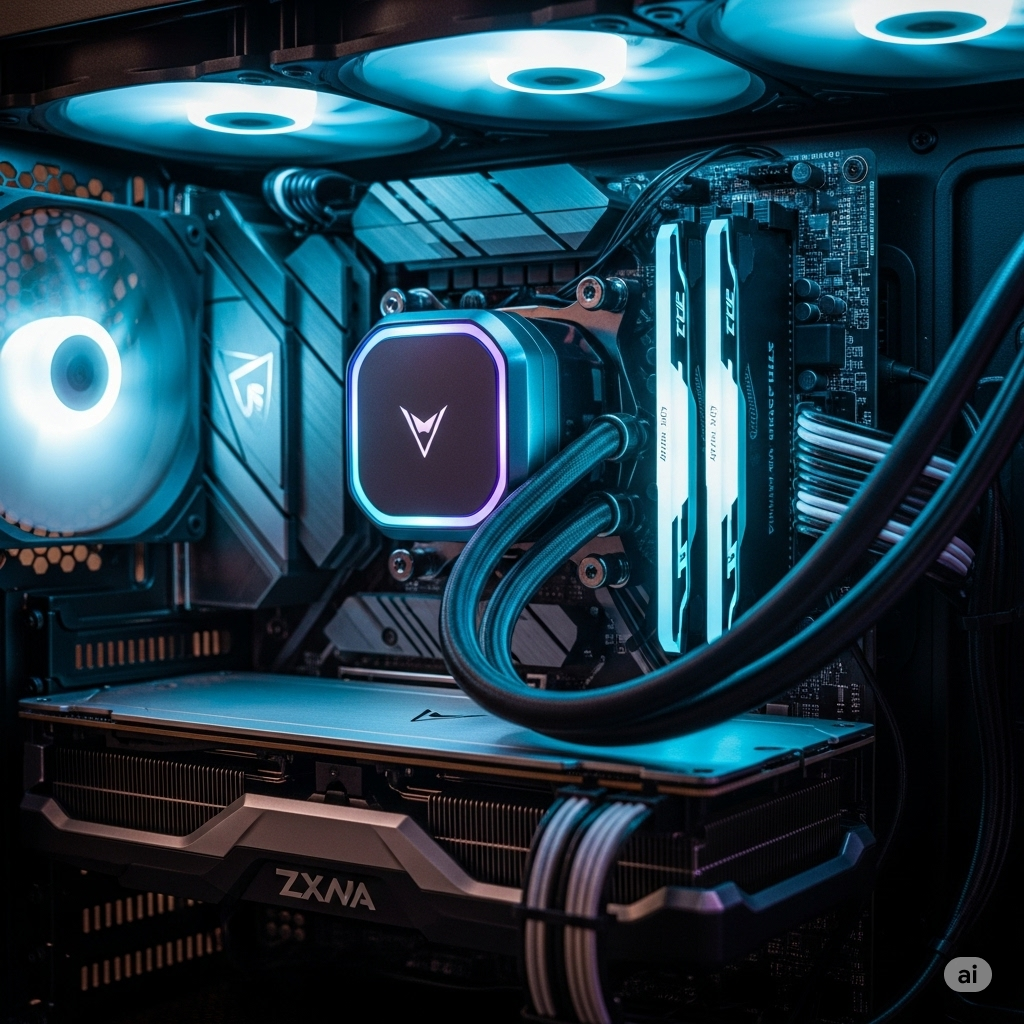
If you want the best all-around, go with the CORSAIR Nautilus 360 RS ARGB. It’s our pick for quiet high-TDP systems: excellent thermal headroom, whisper-quiet fans, and tidy daisy-chain ARGB wiring that keeps your build clean. Ideal if you have a mid- or full-tower case and prioritize silence without sacrificing cooling.
If you’re tight on radiator space but still want top-tier temps, choose the ARCTIC Liquid Freezer III Pro 240. It delivers stellar raw thermal performance and extra VRM cooling in a compact package—perfect for performance-focused builds where radiator clearance or budgeted front-panel space is limited.
How Do Water Coolers Work and Why Should You Get One?
Unlike air coolers, water coolers use liquid circulation to reduce PC component temperatures. These cooling systems rely on distilled water, which flows through tubes to absorb heat. A pump keeps the liquid moving, while the radiator is responsible for cooling it down.
There are several reasons why investing in a water cooler is worth it. They are especially useful for users who want to overclock their processors, those dealing with overheating issues using standard coolers, and anyone who wants to extend the lifespan of their PC components.
By keeping the temperature under control and improving airflow inside the case, the best water coolers help increase the durability of hardware parts. On top of that, they tend to be quieter than traditional air coolers and add a sleek, modern look to your build.
How to Choose the Best Water Cooler
Buying a water cooler may seem like a challenge at first, but the payoff is huge—whether you’re focused on performance, noise reduction, or aesthetics. Here are the main specifications you should look at when choosing the best water coolers for your setup.
1. Larger Radiators Offer Better Heat Dissipation
The radiator is the part responsible for cooling the liquid and dispersing heat. The bigger the radiator, the more efficient the cooling will be. If your PC case is large, a small radiator may not be enough.
Radiators usually range from 80 mm to 360 mm, depending on the number of fans and model power. For standard users, a 120 mm radiator is common, while more advanced users often prefer 240 mm or larger. Always check the exact dimensions to make sure it fits your case without interfering with other components.
2. Pump Quality Impacts Noise Levels
The pump is crucial because it circulates the coolant, preventing overheating and keeping the system stable. One of the most important pump specifications is its noise level, usually measured in decibels (dB).
On average, water coolers range between 10 dB and 30 dB, which is significantly quieter compared to traditional air coolers. If you’re aiming for a quieter PC build, pay close attention to the pump specs when choosing the best water cooler.
3. Fan Speed and Size Matter
Even though water handles most of the cooling, fans are still essential to maintain airflow and regulate temperature. Two key specs to look at are rotations per minute (RPM) and fan dimensions.
Fan speeds can vary from 650 RPM to 2000 RPM depending on the model. Higher speeds usually mean better airflow. As for dimensions, make sure the fans align with your radiator size and fit properly in your PC case.
4. Airflow Inside the Case Is Crucial
Water coolers rely on fans to move heat toward the liquid, creating a steady airflow inside the case. This airflow is usually measured in cubic feet per minute (CFM).
Depending on the number of fans, airflow can range from 30 CFM to 130 CFM. The larger your PC case, the higher the airflow required for optimal performance.
5. Check Motherboard Compatibility
Motherboard compatibility is one of the most important aspects to verify before buying a water cooler. Most modern water coolers support Intel LGA sockets and AMD FM/AM sockets, making installation straightforward.
Still, if you’re using an older motherboard, double-check compatibility before purchasing to avoid surprises.
6. RGB Water Coolers Add Personality
Many of the best water coolers come with built-in RGB lighting, allowing you to personalize your PC build with colorful effects. This not only improves visibility inside the case but also gives your setup a modern and professional look.
An RGB water cooler combines efficiency with style, making your desktop both powerful and visually impressive.
Check Out the Best Water Cooler
Still not sure which one to choose? Click the link below to see the best-selling products.
Also Check Out Other Helpful Articles
Take a look at more useful articles that can help you make more informed decisions.
- Best Mac Keyboards in 2025 (Top 9: iClever, Logitech and More)
- Best Webcams in 2025 (Top 10: Ugreen, Logitech and More)
- Best Water Coolers in 2025 (Top 7: Corsair, NZXT and More)
Video About the Best Water Cooler
We created a video on the topic. Just click to watch.
About the Author
